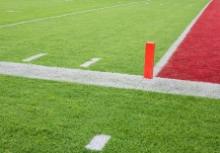
Since 2009, all fifty states and the District of Columbia have enacted statutes to improve prevention and treatment of concussions in youth sports.
The passage of time will determine the efficacy of this new legislation and the desirability of further amendments, but, as I argue in a forthcoming law review article to be published by the Journal of Business & Technology Law (a copy of which is attached as a pdf), one major shortcoming of many of the new state concussions statutes is that regulate only interscholastic sports, and do not extend to private leagues, clubs and associations which do not own and operate their own facilities but instead use fields, gymnasiums, and other public property managed by local governmental bodies, usually the city council, the parks and recreation department, or the public school district.
By exempting private sports organizations that use publicly managed property, lawmakers in many states have left a bulk of youth athletes outside public regulation that, according to every state legislature, reasonably balances the needs of concussion victims with the capacities of organized sports programs to implement reasonable health and safety protocols. About 35 million children play organized sports in the United States each year, including about 60% who play in private organizations outside of school. Football alone enrolls about three million players in private organizations, but only about 1.1 million players on interscholastic teams.
A legislature “may take one step at a time, addressing itself to the phase of the problem which seems most acute,” before deciding whether to proceed further. In states whose concussion statutes exempt private youth sports organizations that use public facilities, I believe that local governments should anticipate the “next step” by applying the existing statewide mandates to these organizations as a condition for private use.
The power of the permit is a valuable, but underused, way to provide playing conditions that are as safe as possible. In states whose new concussions statutes do not reach private youth sports organizations that conduct their programs on public facilities, robust local use of the power can help bolster efforts by parents, national youth sports governing bodies, coaches, league administrators, and other private decision makers to promote concussion safety for the millions of children who play each year.
For an advance copy of my law review article, click on the pdf attachment below. Permission to post PDF below was granted by me.
Note: MomsTEAM Institute's SmartTeams Play Safe Summit at Harvard Medical School on September 15, 2014 featured a presentation by Professor Abrams on The Power of the Permit. Here's the video of his talk



